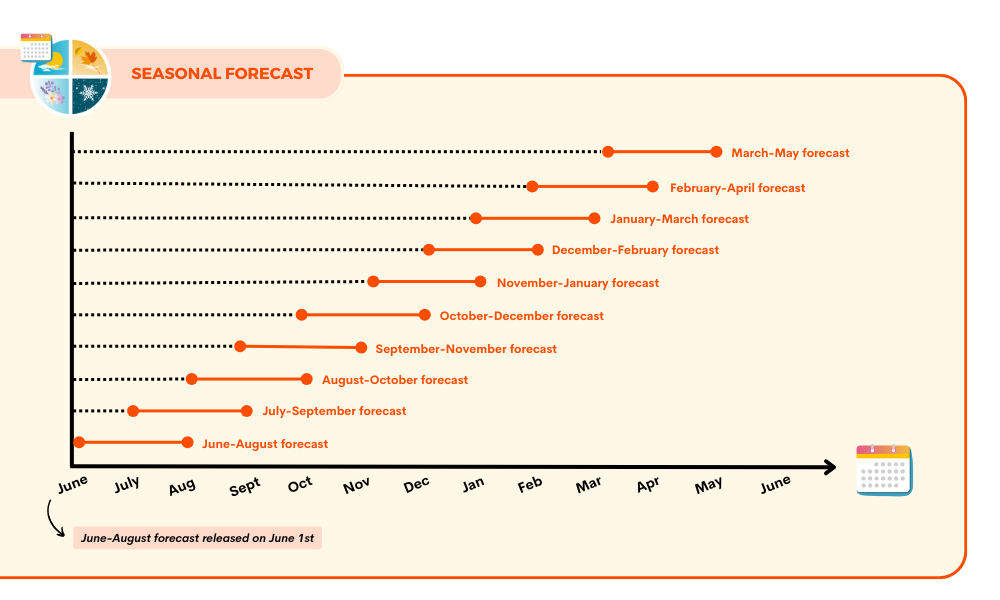Why do we talk about seasonal forecasts rather than three-month forecasts?
In meteorology and climatology, seasons are based on the annual temperature cycle and typically last three months. Standard meteorological seasons are defined as follows:
- Winter: December to February
- Spring: March to May
- Summer: June to August
- Fall: September to November
Seasonal forecasts get their name from the concept of a season based on a three-month period. On ClimateData.ca, forecasts are provided for these four meteorological seasons as well as overlapping three-month periods (e.g., January to March, February to April, April to June, May to July, July to September, August to October, October to December, November to January). Over a 12-month span, there are ten distinct seasonal forecasts. Figure 1 shows an example of forecasts released on June 1st, with 10 forecasts covering three-month periods out to 12 months. For more information, consult What are Seasonal Forecasts?.
Figure 1: Example showing forecasts released on June 1st. Seasonal forecasts overlap, with 10 forecasts covering rolling 3-month periods out to 12 months.
Jump back to top









